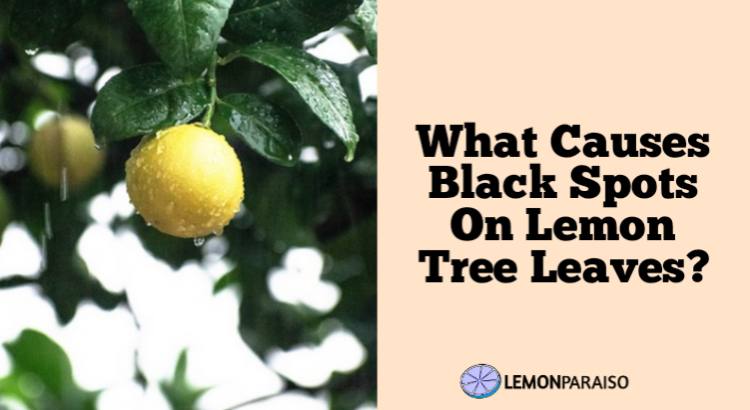Underwatered Lemon Tree: 10 Reasons and Solutions
Lemon trees are cherished for their vibrant fruits, refreshing aroma, and the promise of zesty flavors they bring to our kitchens. However, ensuring their well-being can be a delicate task, and underwatering is a common pitfall that can hinder their growth and fruit production. In this article, we will delve into the intricacies of an underwatered lemon tree, exploring the signs, consequences, and, most importantly, solutions to revive your citrus companion.
Underwatered Lemon Tree Reasons and Solutions
1. Wilting Leaves and Drooping Branches
An underwatered lemon tree often reveals itself through the conspicuous drooping of its branches and wilting leaves. This apparent distress is a clear indication that your tree is not receiving the hydration it requires.
Underwatering can trigger a significant decrease in turgor pressure, causing the cells in the leaves to lose water and subsequently wilt. To remedy this, a thorough watering routine is essential, ensuring that the soil is consistently moist but not waterlogged.
2. Yellowing Leaves and Leaf Drop
One of the most visible signs of an underwatered lemon tree is the yellowing of leaves, often accompanied by premature leaf drop. The yellowing occurs due to a lack of water, leading to reduced chlorophyll production and nutrient absorption.
Addressing this issue involves adjusting your watering schedule to meet the tree’s needs. Providing a deep soak rather than a surface-level watering will encourage the roots to reach deeper into the soil, promoting a healthier and more resilient tree.
3. Stunted Growth and Reduced Fruit Production
An underwatered lemon tree struggles to achieve optimal growth, resulting in stunted development and diminished fruit production. The tree redirects its limited resources to basic survival, neglecting the energy required for robust growth and fruiting.
Revitalizing your lemon tree involves a comprehensive approach, incorporating proper watering, nutrient-rich soil, and suitable sunlight. By establishing an environment conducive to growth, you can encourage your tree to flourish once again.
4. Cracked and Dry Soil
The soil surrounding an underwatered lemon tree is often dry and cracked, reflecting the insufficient moisture available to the tree’s roots. This dryness hinders nutrient absorption and root development, exacerbating the overall health of the tree.
Combatting this issue requires a strategic watering plan. Regularly check the soil moisture levels and adjust your watering frequency accordingly. Implementing mulching can also aid in retaining moisture, fostering a more favorable environment for your lemon tree.
5. Increased Susceptibility to Pests and Diseases
Underwatered lemon trees are more susceptible to pest infestations and diseases. The stress induced by insufficient water weakens the tree’s defenses, making it an easier target for various harmful organisms.
Implementing a pest management strategy alongside a proper watering routine is crucial for restoring the health of your lemon tree. Regularly inspect the leaves for signs of pests and promptly address any issues to prevent further damage.
6. Root Damage and Shallow Root System
Insufficient watering can lead to the development of a shallow root system, restricting the tree’s access to essential nutrients and moisture deep within the soil. Shallow roots also make the tree more vulnerable to environmental stressors.
To rectify this, adopt a deep watering technique, allowing the water to penetrate the soil deeply and encouraging the roots to grow downward. This promotes a robust and well-established root system, fortifying the tree against water scarcity.
7. Increased Sensitivity to Temperature Fluctuations
Underwatered lemon trees exhibit heightened sensitivity to temperature fluctuations. The lack of water compromises the tree’s ability to regulate its internal temperature, making it more prone to heat stress or cold damage.
Mitigating temperature-related challenges involves maintaining a consistent watering schedule and providing shade during periods of extreme heat. These measures help create a stable environment for your lemon tree, enhancing its resilience to temperature variations.
8. Fruit and Flower Drop
Insufficient water availability can trigger the premature dropping of both flowers and developing fruit on a lemon tree. This not only diminishes the yield but also disrupts the natural reproductive cycle of the tree.
Restoring a healthy water balance is key to preventing fruit and flower drop. Adequate watering, coupled with a balanced fertilizer regimen, promotes the development of strong and fruitful branches, ensuring a bountiful harvest.
9. Increased Stress on the Tree
An underwatered lemon tree experiences heightened stress, affecting its overall vitality. This stress manifests in various ways, including wilting, yellowing, and a general decline in the tree’s appearance.
Reducing stress involves a holistic approach, addressing not only the watering regimen but also ensuring proper soil nutrition, sunlight exposure, and pruning. By alleviating stressors, you create an environment conducive to the well-being of your lemon tree.
10. Long-Term Impact on Tree Health
Continuous underwatering can have long-term consequences, severely impacting the overall health and lifespan of your lemon tree. Chronic stress weakens the tree’s immune system, making it more susceptible to diseases and reducing its ability to recover.
To counteract long-term damage, focus on establishing a consistent and adequate watering routine. Additionally, regular monitoring, pruning, and providing proper nutrients will contribute to the sustained health and longevity of your lemon tree.
In conclusion, nurturing a lemon tree to its full potential requires a keen understanding of its water needs. By recognizing the signs of underwatering and implementing appropriate solutions, you can ensure a flourishing and fruitful lemon tree that graces your garden with its vibrant presence.



